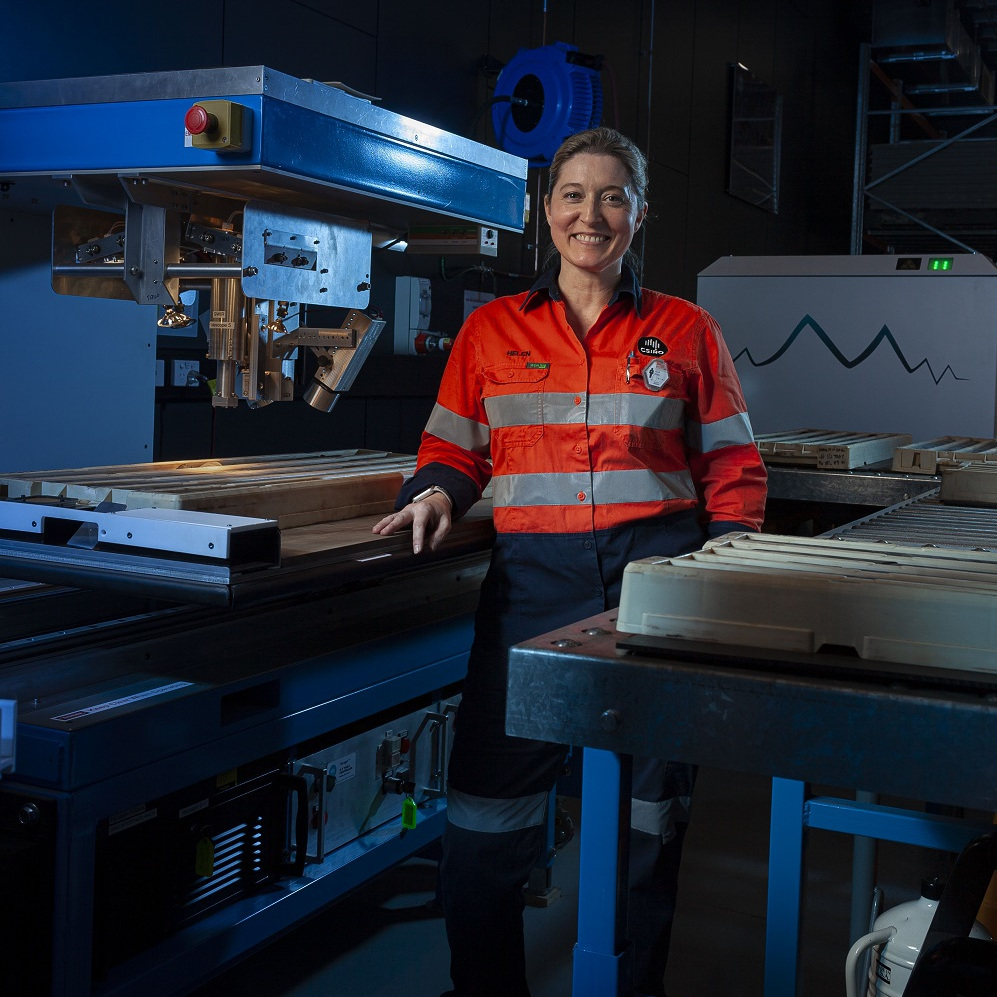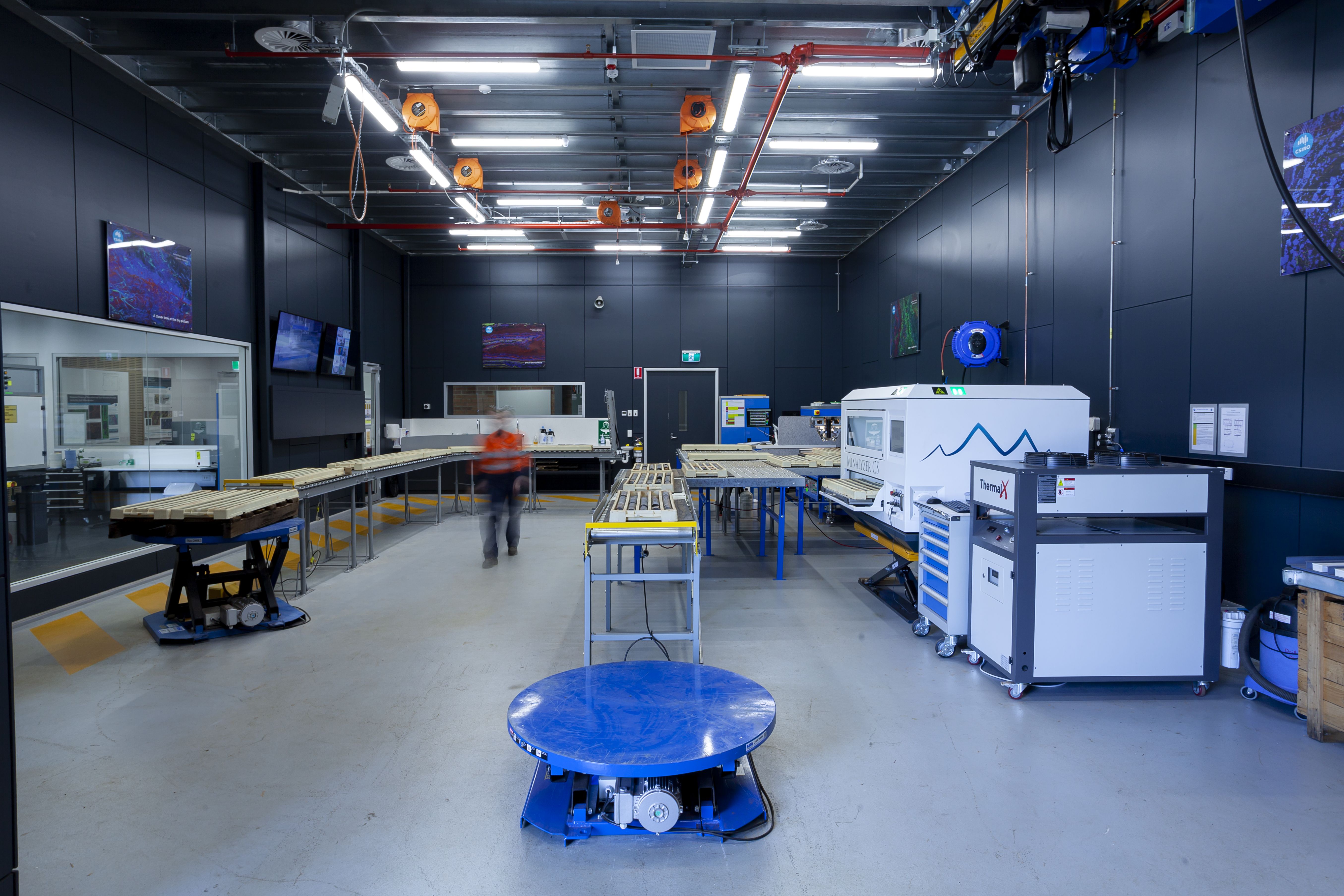 The Geoscience Drill Core Research Laboratory brings together CSIRO's unique Maia Mapper system with the latest commercial core scanning instrumentation developed by the METS sector in one facility.
The Geoscience Drill Core Research Laboratory brings together CSIRO's unique Maia Mapper system with the latest commercial core scanning instrumentation developed by the METS sector in one facility.
Located at the Advanced Resources Research Centre in Perth, Western Australia, the laboratory provides research tools to support Australia's mineral exploration and mining industry.
The facility provides a test bed the research community to work with the resources industry to develop new workflows to enhance success and productivity in mineral exploration and mining, working in collaborative projects with industry.
The array of instrumentation and on-site expertise allows researchers to examine drill cores at multiple scales - from big picture analyses on kilometres of drill core through to the elemental composition of rock at the micron-scale.
Equipment and expertise
The laboratory operates a suite of specialised drill core scanning instrumentation, including:
- the CSIRO-developed Maia Mapper system microbeam XRF scanning instrument for high resolution, micron scale analyses
- Minalyzer's CS X-ray fluorescence scanning instrumentation
- Corescan's automated mineralogical and textural analysis instrumentation
- GeoTek’s petrophysical logging system, and
- the CSIRO-developed HyLogger3 system.
This test bed facility is enabled by a team of experienced technicians and geoscientists who operate the equipment, and supported by world-leading experts in geoscience and data interpretation.

Benefits and applications for mining and mineral exploration research
This dedicated facility in Perth enables researchers across Australia to collect a diverse range of data to extract maximum value from drill core samples.
Applications include:
- geochemical and hyperspectral data to show elemental and mineralogical abundance against stratigraphic depth
- spectral data to understand mineralisation and alteration relationships
- data to determine stratigraphic units and boundaries, for example, facies, sedimentary succession and alteration mineralogy
- data to assist with seismic stratigraphy
- rapid high-resolution core photography
- sediment chemistry and accumulation rates, and
- core quality assessment.
The Geoscience Drill Core Research Laboratory was supported by funding from the Science and Industry Endowment Fund (SIEF).
The Geoscience Drill Core Research Laboratory brings together CSIRO's unique Maia Mapper system with the latest commercial core scanning instrumentation developed by the METS sector in one facility.
Located at the Advanced Resources Research Centre in Perth, Western Australia, the laboratory provides research tools to support Australia's mineral exploration and mining industry.
The facility provides a test bed the research community to work with the resources industry to develop new workflows to enhance success and productivity in mineral exploration and mining, working in collaborative projects with industry.
The array of instrumentation and on-site expertise allows researchers to examine drill cores at multiple scales - from big picture analyses on kilometres of drill core through to the elemental composition of rock at the micron-scale.
Equipment and expertise
The laboratory operates a suite of specialised drill core scanning instrumentation, including:
- the CSIRO-developed Maia Mapper system microbeam XRF scanning instrument for high resolution, micron scale analyses
- Minalyzer's CS X-ray fluorescence scanning instrumentation
- Corescan's automated mineralogical and textural analysis instrumentation
- GeoTek’s petrophysical logging system, and
- the CSIRO-developed HyLogger3 system.
This test bed facility is enabled by a team of experienced technicians and geoscientists who operate the equipment, and supported by world-leading experts in geoscience and data interpretation.
Benefits and applications for mining and mineral exploration research
This dedicated facility in Perth enables researchers across Australia to collect a diverse range of data to extract maximum value from drill core samples.
Applications include:
- geochemical and hyperspectral data to show elemental and mineralogical abundance against stratigraphic depth
- spectral data to understand mineralisation and alteration relationships
- data to determine stratigraphic units and boundaries, for example, facies, sedimentary succession and alteration mineralogy
- data to assist with seismic stratigraphy
- rapid high-resolution core photography
- sediment chemistry and accumulation rates, and
- core quality assessment.
The Geoscience Drill Core Research Laboratory was supported by funding from the Science and Industry Endowment Fund (SIEF).

